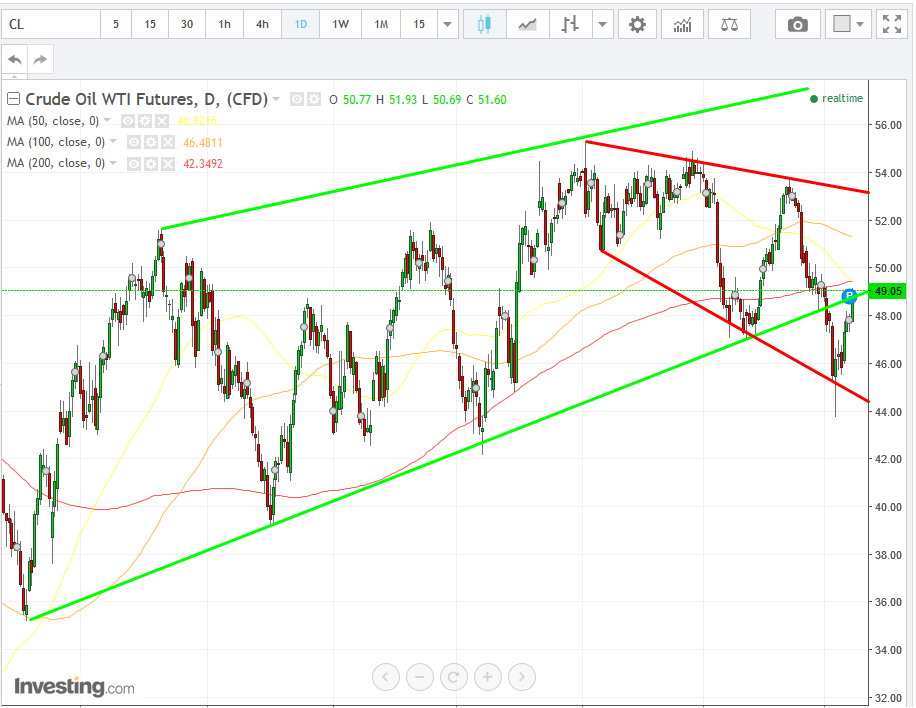by Pinchas Cohen
An unlikely image for WTI crude is as a commodity in distress, yet that's exactly how Saudi Arabia and Russia seem to be relating to it. Each has given its word of honor that last November's production cuts will be extended into 2018 in an effort to bolster the price of the sagging commodity.
Ironic that the asset once referred to as “black gold” has, more recently, become a chronic 'damsel' in distress. While the valiant efforts of crude's OPEC and NOPEC would-be saviors are blatant, the villain in this scenario—US shale producers—appears to have an advantage of possibly mythic proportions. How can crude's 'knights in armor' be victorious when their rescue efforts actually feed the American 'dragon?'
The more OPEC and NOPEC give up their market share, the more the dragon's fire-breathing efforts increase the distress—the eroding price of oil.

Crude oil has been trading within an ascending channel since early April, but rising US inventories, along with increasing shale production released the commodity from its pattern and shifted it into a new, falling channel, which began in late February. Today’s assurances that production cuts would remain in place into next year renewed the uptrend, but not enough to overcome the 200 dma (red), which is supported by the 50 dma (yellow), which is threatening to cross below the 200 dma in a more aggressive attack.
On a more optimistic note: today’s price rise takes oil back into the rising channel. However, remember that unless the price can overcome the 200dma, and the 50dma that has its back, the price won’t push back to the mid $50. Rather, from a technical stand point, it would be expected to continue its pattern within the falling channel, back to $45.
